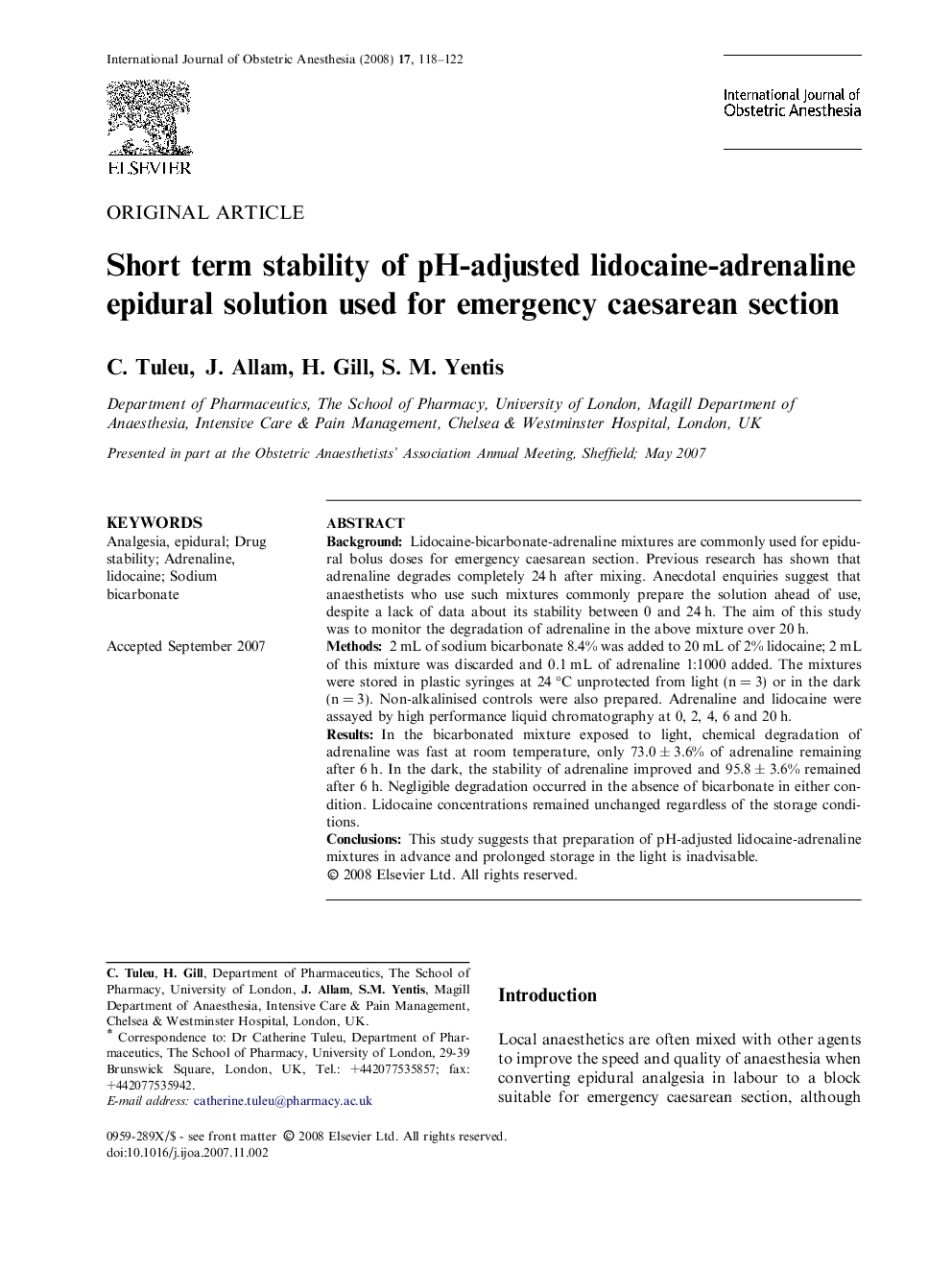| Article ID | Journal | Published Year | Pages | File Type |
|---|---|---|---|---|
| 2758122 | International Journal of Obstetric Anesthesia | 2008 | 5 Pages |
BackgroundLidocaine-bicarbonate-adrenaline mixtures are commonly used for epidural bolus doses for emergency caesarean section. Previous research has shown that adrenaline degrades completely 24 h after mixing. Anecdotal enquiries suggest that anaesthetists who use such mixtures commonly prepare the solution ahead of use, despite a lack of data about its stability between 0 and 24 h. The aim of this study was to monitor the degradation of adrenaline in the above mixture over 20 h.Methods2 mL of sodium bicarbonate 8.4% was added to 20 mL of 2% lidocaine; 2 mL of this mixture was discarded and 0.1 mL of adrenaline 1:1000 added. The mixtures were stored in plastic syringes at 24 °C unprotected from light (n = 3) or in the dark (n = 3). Non-alkalinised controls were also prepared. Adrenaline and lidocaine were assayed by high performance liquid chromatography at 0, 2, 4, 6 and 20 h.ResultsIn the bicarbonated mixture exposed to light, chemical degradation of adrenaline was fast at room temperature, only 73.0 ± 3.6% of adrenaline remaining after 6 h. In the dark, the stability of adrenaline improved and 95.8 ± 3.6% remained after 6 h. Negligible degradation occurred in the absence of bicarbonate in either condition. Lidocaine concentrations remained unchanged regardless of the storage conditions.ConclusionsThis study suggests that preparation of pH-adjusted lidocaine-adrenaline mixtures in advance and prolonged storage in the light is inadvisable.
